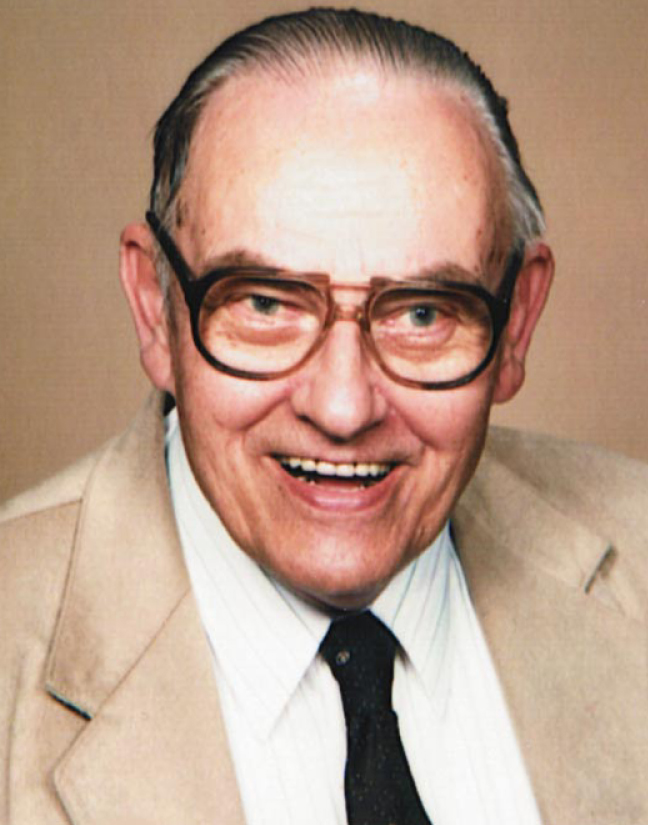Donald Tuomi
DOI: 10.1063/1.1554146
After a lifetime of contributions to different branches of science, Donald Tuomi died of heart failure on 12 March 2002 in Arlington Heights, Illinois.
Don was born on 12 September 1920 in Willoughby, Ohio, and received his BS in chemistry from Ohio State University in 1943. Instead of immediately continuing his studies, he joined the Manhattan Project at the Special Alloy Materials (SAM) Laboratories at Columbia University. There, he was deeply involved in the successful development of the “barrier” for the Oak Ridge Gaseous Diffusion Plant. The barrier was a key to separating out uranium-235 from uranium-238. After World War II, Don returned to Ohio State and received his PhD in physical chemistry in 1953. His dissertation project, under the guidance of Preston Harris, involved determining the crystal structure of lithium trichloroacetate.
Don contributed to diverse fields. For instance, as a graduate student, he worked on silver cesium oxide photocathodes for infrared night vision. After graduate school, he joined MIT Lincoln Laboratories, where he worked with Homer Priest on oxygen contamination of silicon and germanium. Then, until 1961, he worked at the Thomas A. Edison Laboratories to determine the limiting mechanisms for electrochemical capacity of the nickel–iron alkaline storage battery. His paper, “The Forming Process in Nickel Positive Electrodes,” published in the Journal of the Electrochemical Society in 1965, is a prime example of an approach to science that, like Nature itself, recognizes no artificial boundaries. That paper illustrated the use of a variety of investigative disciplines toward solving the problem. In recognition of his contribution, the Electrochemical Society awarded Don its Battery Division Research Award in 1968.
For most of the period 1961–83, Don pursued his major research interest, thermoelectric alloys, at the Borg-Warner Research Center in Des Plaines, Illinois. Known as somewhat of a maverick, he made persuasive arguments for alternative approaches for optimizing thermoelectric properties. For example, he defined certain quality indices and asserted that optimization of alloys involved optimizing his indices. He challenged the commonly held assumption that attainment of a figure of merit greater than 2.7 was practically impossible, and proved his point by making alloys having figures of merit greater than 3.0. He and an associate, Allen Reich, developed greatly improved methods for measuring electrical transport properties and thermal conductivity. Perhaps most important, he described in great detail the challenge of understanding and dealing with multicomponent systems like bismuth-antimony-selenium-tellurium plus dopants.
From 1972 to 1980, Don’s work on thermoelectric alloys was interrupted after he was asked by Borg–Warner management to carry out fundamental studies on deformation mechanisms in ABS (acrylonitrile-butadiene-styrene) plastic. At the time, Borg–Warner Chemicals, headquartered in Parkersburg, West Virginia, was the world’s leading producer of ABS. Don and I worked together in his group; he challenged the “experts” about the mechanism by which dispersed polybutadiene rubber particles conferred high toughness on an otherwise brittle matrix of styrene-acrylonitrile copolymer. Years later, Don told me, “Bob, I found out in the recent literature that our view of voids in rubber particles not being an artifact of sample preparation is now generally accepted.”
Don retired from the Borg–Warner Research Center in 1983. Immediately afterward, he set up a consulting business in Arlington Heights. That business emphasized, but was not limited to, thermoelectric alloy development.
In the years after I left Don’s group, our relationship transformed from close colleagues in research to close friends. I have many happy memories of my wife and me meeting Don and his wife, Ruth (often with other alumni of the research center), for dinner and a pleasant evening of conversation. Of course, when Don and I got into technical subjects, the others would just roll their eyes and sigh.


More about the Authors
Robert W. Johnson. DSM Desotech Inc, Elgin, Illinois, US .
